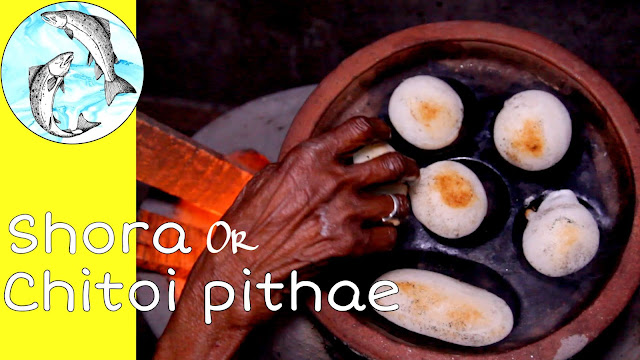Shora pithe or chitoi
pithe
Makar Sankranti Special
“So we Indians have been celebrating not just New Year, but also a New Harvest season. Different parts of the country have different celebrations, Tradition asks for the making of special sweet and savoury treats (called PITHE) during this season; the use of newly harvested rice and grains, date palm molasses/jaggery and lentils are predominant. So what is Chitoi Pithe (or Pitha)? It is a traditional steamed rice cake (not unlike Idli or Appam/Paddu), and hails from Bangladesh. Bangladesh is adept at making exquisite varieties of Pithe (they call it Pitha), unlike many of us who hail from West Bengal (we’re called ‘Ghoti’). And because most of my family has lived outside Bengal, our repertoire of Pithe-making has been limited to a couple of staples, such as Doodh Puli, Patishapta, Payesh, Soru Chakli, and so on. Thus this year was a nice change from the regular. Chitoi Pithe are simple rice cakes that are steamed in a special earthen vessel with a tray with hollow cavities to fill with batter, and a lid.”
YIELDS 4 Servings Preparation 40
TIME
minutes
INGREDIENTS
·
Atop Chal/Pulao Rice (short-grained fragrant rice) – 250 gm
·
Sheddho Chal/Parboiled Rice – 250 gm
·
Salt – 25 gm
·
Warm water – as required
METHOD
1.
Soak
the rice for 2-3 hours. You may also soak them overnight.
2.
Drain the water
from the soaked rice.
3.
In a blender, add
the soaked and drained rice, the cooked rice, salt and warm water just enough
to make a smooth paste.
4.
Blend into a
smooth paste (the paste will be slightly grainy) and pour into a large vessel.
5.
Add more water, so
as to make a smooth, flowy batter, not unlike a dosa batter.
6.
keep aside for 4
to 6 hours or overnight and let it ferment.
7. Once the batter has
rested overnight, start heating the chitoi pithe mould on high. Reduce the
flame once it is hot, and generously grease the moulds with oil.
8.
Using a ladle,
pour about 2 tbsp batter into each greased cavity and pop the lid on top.
9.
Let it cook on low
heat for 2-3 minutes or until the pithe have cooked in the middle; the edges
will start turning light golden.
10. Loosen
the edges of each pithe with a knife or fork and demould them gently.
11. Use
a paper towel or napkin to clean the cavities and grease them lightly before
pouring in the next batch.
12. Repeat
until all the batter is consumed.
13. Serve
hot with liquid Nolen gur.


0 comments:
Post a Comment